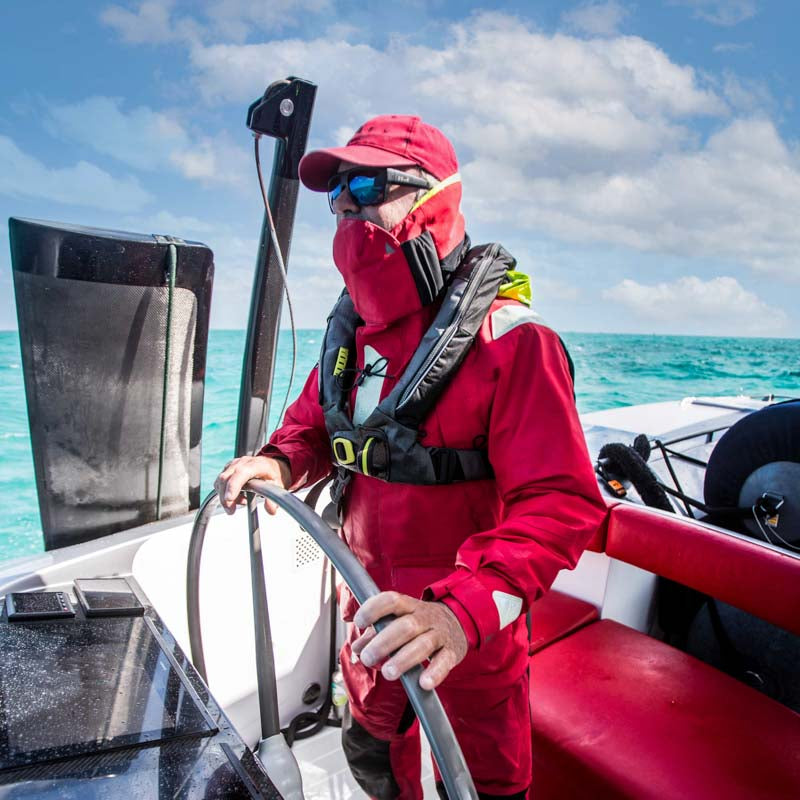Buoyancy aid or life jacket – what’s the difference?
Buoyancy aids and life jackets are both designed to keep the wearer afloat, but they are suitable for different activities. Generally, buoyancy aids are more appropriate for activities where you’re likely to end up in the water – like dinghy sailing, kayaking, personal watercraft, windsurfing and paddleboarding. Life jackets tend to be used for yacht sailing/racing, on RIBs, powerboats and tenders.
Buoyancy aids and life jackets are known collectively as personal floatation devices or PFDs.
Buoyancy aids
Buoyancy aids are just that – an aid to buoyancy. The expectation is that you’ll be able to help yourself by swimming and that help is close to hand.
Buoyancy aids are usually a vest or bib with foam panels in the front and back. When you go into the water the buoyancy aid works immediately – you don’t need to activate or inflate anything.
The shape of the panels, fit and fixings provide the support or movement needed for different water sports activities. Try different brands on to see which is most comfortable.
Belt-style buoyancy aids
Belt-style inflatable buoyancy aids are popular with paddle boarders (SUP). These are like a small ‘bum bag’ that clips round the waist and can be manually inflated by pulling a tag.
Life jackets
The most important difference between a life jacket and a buoyancy aid is that a life jacket will keep a casualty in a safe position, with their face out of the water.
This sounds great, so why doesn’t everyone choose a life jacket?
To be able to turn a casualty into a safe position, life jackets have a bladder that is inflated with air. Every time it is inflated, the inflation system (gas bottle and arming kit) must be replaced. An inflated life jacket is bulky and can be a snag hazard on smaller craft.
Auto or manual inflation?
Life jackets are inflated from a built-in gas bottle, activated either by an auto trigger or by a manual pull tag. Auto inflation life jackets are now the most popular choice for most sailors and motor boaters.
Every time the life jacket is inflated, the gas bottle and activation mechanism will need to be replaced. It is a good idea to carry spare inflation kits onboard – it is a quick DIY job to deflate, replace the mechanism and repack the life jacket.
Do I need a harness for my life jacket?
All life jackets have an adjustable waist strap, and on some designs this incorporates a webbing harness with a loop or stainless D on the front. This is for attaching a safety line and is usually chosen by yacht cruisers and racers.
Safety lines clip onto a secure point or jack stay running along the deck to stop the sailor falling overboard or to keep them attached to the boat if they do go over the side.
What are crotch straps for?
Crotch straps (or crutch straps) go between the legs, attaching to the front and back of the life jacket. They stop it riding up when the casualty is in the water, keeping their face clear. Most modern life jackets come with crotch straps as standard. Some buoyancy aids also have crotch straps, especially those aimed at juniors.
Crotch straps on children’s life jackets are usually a wide fabric gusset which can be adjusted as the child grows.
What other life jacket accessories do I need?
There are a range of safety accessories that can be packed into your life jacket. Some yacht racing and long-distance sailing events will require sailors to have these accessories.
- Spray hood – a clear hood that keeps spray off your face, making it easier to breathe.
- Light – water-activated flashing light to attract attention.
- Personal Locator Beacon (PLB) – for man overboard recovery using AIS and/or satellite comms.
- Safety line – for harness life jackets to keep the casualty onboard.
What does 50N or 150N mean?
Buoyancy is rated in Newton N. Adult buoyancy aids are usually 50N and junior buoyancy aids 35N. Children’s foam life jackets are 100N. Standard adult inflatable life jackets are 150N. 275N life jackets are normally for commercial applications as they are bulky.
Children and pets
There are life jackets and buoyancy aids suitable for children. Young children should use a 100N foam life jacket with a collar and fabric crotch strap – in an emergency, this will turn the child onto its back. Older children have the choice of junior version buoyancy aids and auto or manual inflation life jackets.
Flotation devices for cats and dogs are usually a coat-style buoyancy aid with chest and under straps and a grab handle on top.
Comfort
Whatever flotation device you choose for your family, it is vital that they feel comfy and secure. If your life jacket or buoyancy aid is in a locker it won’t save your life!

